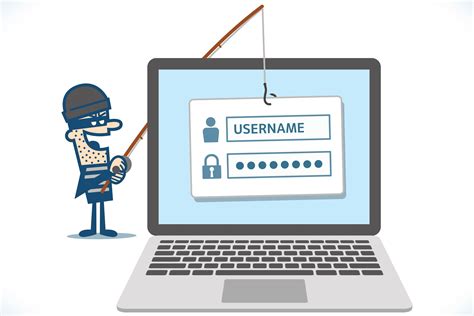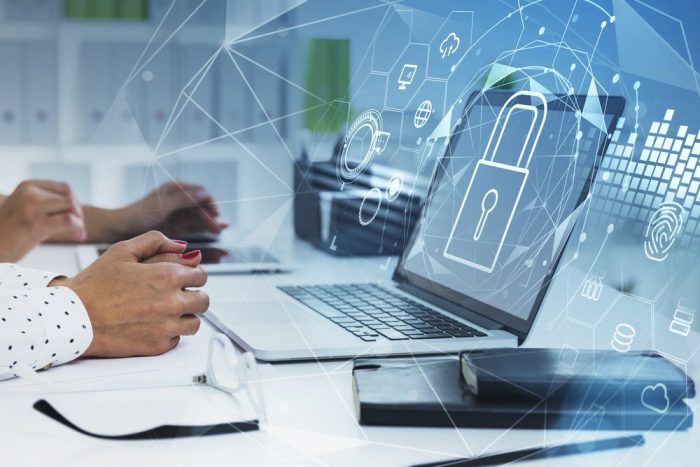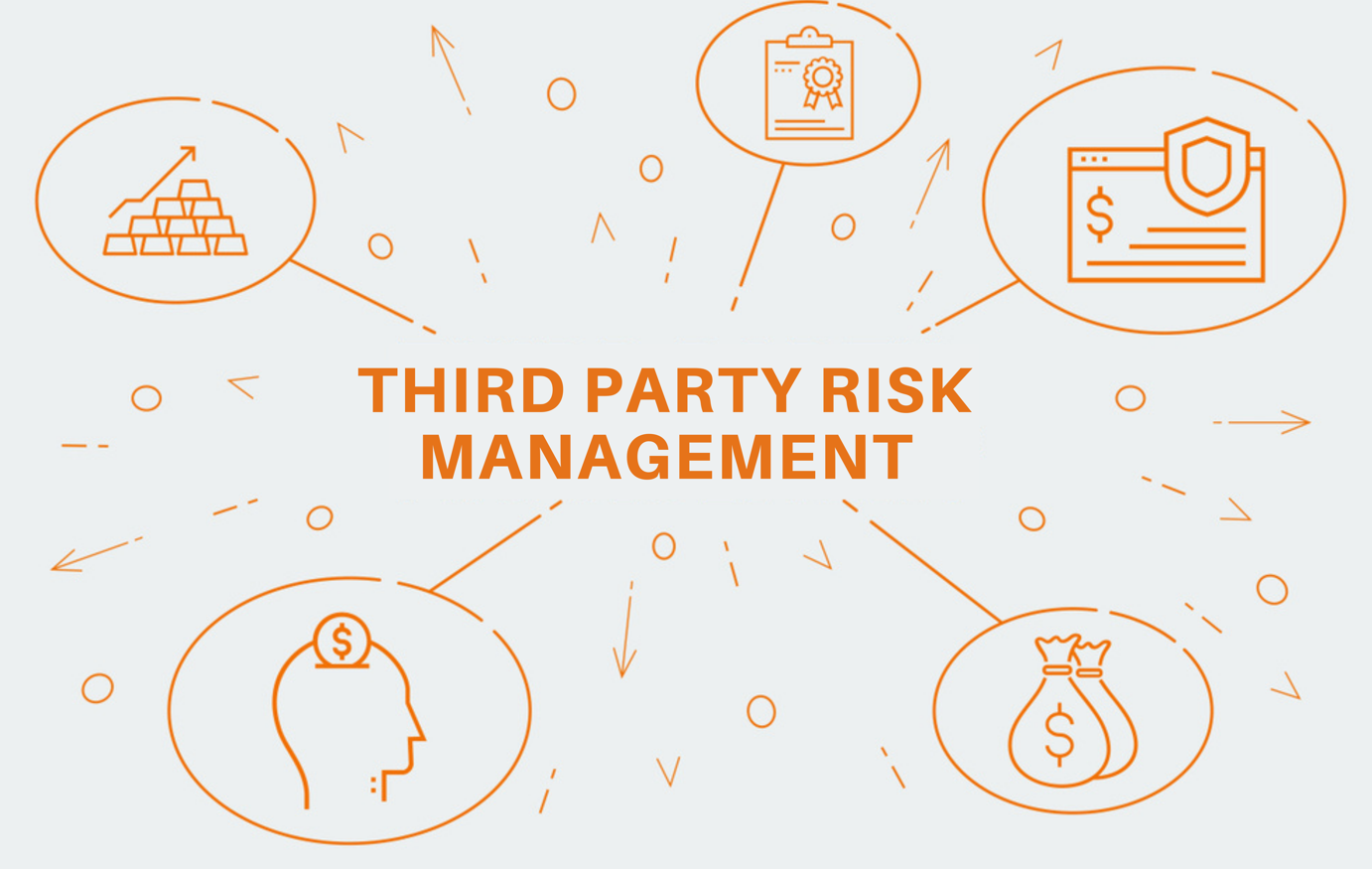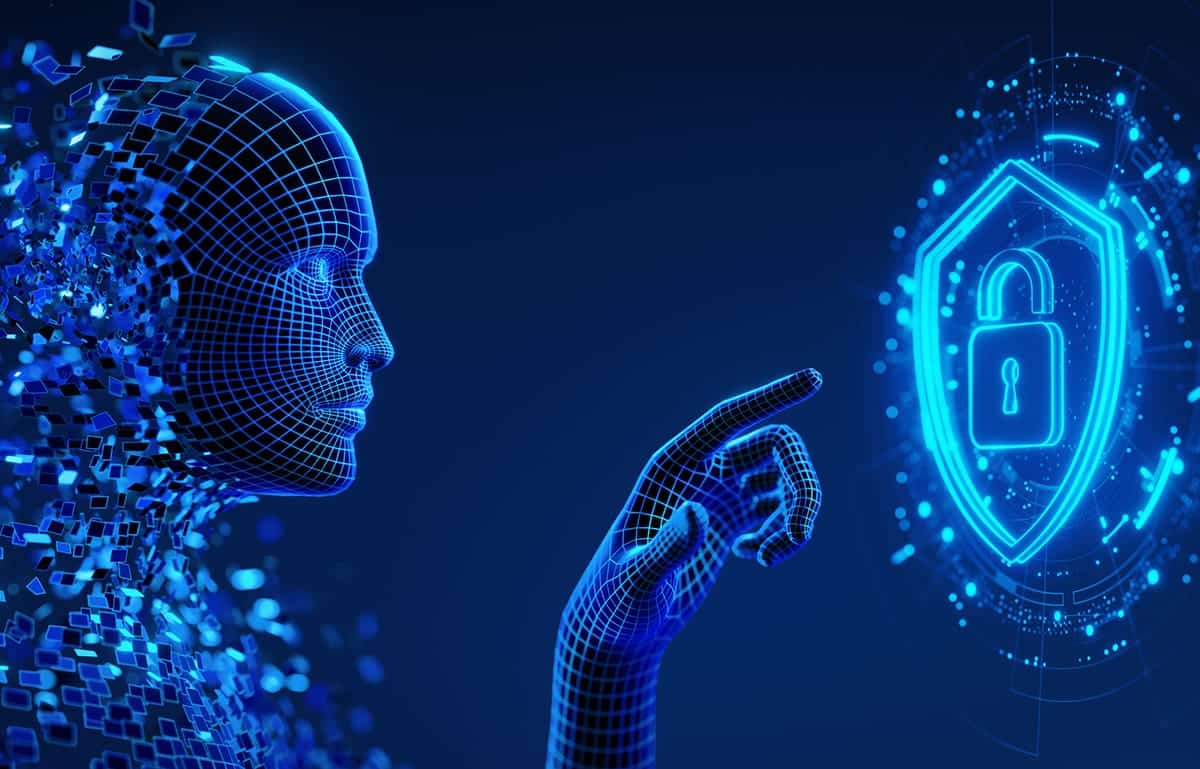In an era where financial transactions are becoming increasingly complex and digital, fraud has evolved into one of the most dangerous and costly threats to businesses, governments, and individuals worldwide. As fraudsters grow more sophisticated, the need for professionals with the specialized skills to detect, prevent, and investigate financial crime has never been more pressing. Enter the Certified Fraud Forensic Professional (CFFP) certification a transformative credential that can propel your career to new heights while making a real difference in the fight against fraud. If you’re looking to stay ahead of the curve, enhance your earning potential, and be at the forefront of fraud prevention, here’s why the CFFP certification is an absolute must. Stay ahead of the rapidly evolving fraud landscape Fraud isn’t static it’s evolving at an alarming rate. From digital fraud to identity theft and cybercrime, the tactics criminals use are constantly changing. To keep up, professionals need the latest knowledge, tools, and techniques to stay one step ahead. The CFFP certification equips you with cutting-edge expertise in fraud detection and forensic investigation, ensuring you remain a valuable asset in an industry that is only going to grow in importance. With this certification, you’ll be prepared to combat emerging fraud schemes and proactively prevent financial losses. Open doors to lucrative career opportunities The demand for fraud forensic professionals is skyrocketing. Every day, businesses, financial institutions, and government agencies face new threats of financial crime, and they are actively seeking highly skilled experts who can tackle these challenges head-on. By earning your CFFP certification, you position yourself as a highly sought-after professional in this high-demand field. Whether you’re looking to work in forensic accounting, consulting, auditing, or within law enforcement, this certification unlocks doors to a wide range of rewarding career opportunities and the earning potential to match. Master a comprehensive skill set in fraud forensics Fraud detection and prevention go beyond basic accounting skills. The CFFP certification offers a deep dive into forensic accounting, fraud investigation techniques, fraud risk management, legal considerations, and more. This holistic approach arms you with the skills needed to identify fraud patterns, investigate suspicious activities, gather evidence, and develop robust strategies to safeguard organizations from financial harm. Whether you’re analyzing financial records or conducting complex investigations, the CFFP ensures you’re prepared for it all. Make a tangible impact on the fight against fraud The consequences of fraud extend far beyond financial losses; it can destroy reputations, break trust, and lead to significant operational setbacks. By earning your CFFP, you’ll be at the forefront of the battle against financial crime. With your expertise, you’ll help organizations avoid the financial devastation caused by fraud, recover lost assets, and build stronger, more secure systems. Your work will have a direct, measurable impact on protecting organizations and individuals from the far-reaching consequences of fraud. The time to act is now: seize this opportunity Fraud is not slowing down it’s intensifying. Organizations are investing heavily in fraud prevention, and those with specialized knowledge are in high demand. If you want to remain competitive in today’s job market, it’s crucial to act now. The CFFP certification is not just an investment in a qualification; it’s an investment in your career, your future, and your ability to make a meaningful difference in the world of financial security. Don’t wait until it’s too late to seize these opportunities now is the time to position yourself as a trusted expert in fraud forensics. Leap into a brighter, more secure future The Certified Fraud Forensic Professional (CFFP) certification is more than just a credential. It’s a pathway to a rewarding, impactful career in a rapidly expanding field that is vital to the security and success of businesses worldwide. By earning your CFFP, you’re not only gaining valuable skills that will elevate your professional standing you’re also taking a proactive stance against financial crime, helping to protect organizations from the devastating effects of fraud. Now is the time to invest in yourself, unlock new career opportunities, and become a recognized leader in the field of fraud forensics. With the rising threats of financial crime, your expertise will be more in demand than ever. Don’t let this critical opportunity pass you. Enroll in the CFFP course today, and take the next step toward securing your future.
Stop chasing cyber certs why CCSM is the only one that matters
In the overcrowded world of cybersecurity certifications, everyone is chasing acronyms you know several. They look good on a LinkedIn profile but let’s face it most are outdated, impractical, or just plain overhyped. If you want real-world skills that make an actual impact, stop wasting time and focus on what counts: the Certified Cybersecurity Master (CCSM) course. Here’s why CCSM stands out Learn to solve problems, not memorize facts Most certifications test your ability to memorize buzzwords and theoretical concepts. CCSM focuses on what matters detecting, responding to, and preventing cyber threats in live environments. Practical, hands-on training Forget sitting through hours of lectures. CCSM puts you in simulated attack scenarios so you’ll know exactly how to handle real-world threats. By the time you’re certified, you’ll have done the job, not just read about it. No fluff, all substance We cut the fluff. Every module in the CCSM course is directly tied to skills you’ll use on the job. No filler, no extra “nice-to-know” topics. Just the critical stuff that keeps networks secure and businesses safe. Built for today’s threat landscape Cyber threats evolve fast, but most certs take years to update their content. CCSM is designed to address current challenges like ransomware, zero-day exploits, and insider threats not yesterday’s news. Stand out where it counts Recruiters and hiring managers are tired of cookie-cutter certifications. CCSM demonstrates mastery of advanced skills that show you’re not just another checkbox candidate. Who is ccsm for? IT professionals who want to level up their cybersecurity expertise. Organizations looking to build effective in-house SOC capabilities. Anyone tired of spending money on certs that offer zero ROI. Final word Certifications should be a stepping stone, not a dead-end. CCSM doesn’t just certify you it transforms you into a cybersecurity expert who delivers results. Are you ready to ditch the hype and focus on what works? Enroll in the CCSM course today and start mastering the skills that matter. “Real expertise isn’t certifiedit’s demonstrated.” Mr Strategy.
Building a Cost-Effective SOC for Umoja SACCO
Umoja SACCO, a mid-sized financial cooperative with 15,000 members, faced growing cybersecurity threats as it digitized its services. It needed a Security Operations Center (SOC) but didn’t have the budget to hire a full-time security team or invest in high-end cybersecurity tools. Here’s how Umoja SACCO built an effective SOC without draining its limited resources. Challenge Rising phishing attempts targeting member accounts. Regulatory pressure to meet financial security standards. Limited budget of US $20,000 for cybersecurity initiatives. Approach Centralized, affordable technology Umoja opted for an open-source SIEM solution. This tool provided centralized log management, alerting, and compliance reporting without subscription costs. Leveraged managed services Instead of hiring 24/7 analysts, Umoja partnered with Summit Consulting iShield360 Cybersecurity for after-hours monitoring. This reduced staffing costs while maintaining round-the-clock threat detection. Focused Training for IT Staff Their two-person IT team received focused training on cybersecurity fundamentals (e.g., CompTIA Security+), enabling them to manage the SIEM and respond to incidents. Automated Detection and Response Umoja integrated endpoint protection with automated responses. For example, suspicious activity (e.g., unauthorized login attempts) triggered automated account lockdowns until reviewed. Improved cyber hygiene A strict cyber hygiene program was implemented: Mandatory regular password updates for all members. Multi-factor authentication (MFA) for member logins. Patching servers and applications monthly. Monthly threat hunting sessions The IT team dedicated one day per month to review logs and hunt for anomalies, supported by the SIEM’s built-in analytics. Results Umoja spent US$10,500 on the SIEM setup, iShield 360 security monitoring services, and training, leaving room for further upgrades. Mean Time to Detect (MTTD) dropped from 48 hours to 4 hours. Umoja reported zero major incidents in the first year of the SOC’s operation. Met financial regulations for security and data protection with minimal expenditure. Key takeaway A SACCO doesn’t need to spend millions to secure its operations. Umoja SACCO’s lean SOC combined affordable tools, smart outsourcing, and focused training to achieve robust cybersecurity on a tight budget. You don’t need a Fortune 500 budget to protect your organization just the right strategy.
Rethink your soc strategy effective cybersecurity without bleeding cash
Dear Executive Team, Cybersecurity doesn’t have to mean writing a blank check. The conventional wisdom screams for bloated Security Operations Centers (SOCs) brimming with overpriced analysts and tools. Let’s dismantle that myth. You can establish a lean, efficient SOC that works without funneling your budget into a black hole. Here’s how: Clarity over complexity Most SOCs fail because they aim for shiny instead of functional. You don’t need 15 overlapping tools creating more noise than signals. Invest in a centralized platform that integrates well with SIEM or XDR, not 12-point solutions that argue with each other. Automate or Die Trying Manual analysis is for dinosaurs. Automate repetitive tasks like log analysis and alert triage. Machine learning-based detection tools can do in seconds what a roomful of analysts might miss in hours. Plus, automation doesn’t call in sick. Outsource what you can’t scale No, you don’t need a 24/7 on-site team. Leverage Managed Detection and Response (MDR) services for after-hours coverage. They’re cheaper, faster, and often better equipped than a junior analyst chugging coffee on a graveyard shift. Train your people, not just hire new ones Throwing bodies at problems is a lazy, expensive habit. Upskill your existing IT team instead of hiring a small army. Certifications like CISSP or CEH aren’t just resume fluff they teach practical skills that translate into better security outcomes. Measure impact, not activity Stop fixating on how many tickets your SOC closes or how many alerts they chase. Focus on reducing Mean Time to Detect (MTTD) and Mean Time to Respond (MTTR). Efficiency beats busyness every time. Adopt a “Threat Hunting First” Mindset Reactive SOCs drown in alerts. Proactive threat hunting cuts through the noise by identifying vulnerabilities and anomalies before they explode into breaches. Equip your team with the mindset and tools to hunt, not just react. Cyber hygiene is non-negotiable The best SOC in the world won’t save you if your basic defenses patching, endpoint protection, and strong passwords are a joke. Get the fundamentals right, and you’ll have fewer fires to fight in the first place. Final Word A SOC isn’t a trophy or a trend to follow. It’s a tool to protect your organization without bleeding your resources dry. Resist the impulse to overspend on status symbols. Instead, prioritize efficiency, automation, and a proactive security culture. Because a SOC that costs millions but doesn’t work isn’t just wasteful it’s negligent. Let’s build smarter. Best regards, iShield 360 Cybersecurity + IFIS Team
The Rising Tide of Internet Fraud in Uganda: A Call for Vigilance and Action
In the digital age, the Internet has become an essential part of daily life, offering numerous opportunities for economic growth, communication, and innovation. However, it has also provided fertile ground for fraudulent activities. In Uganda, internet fraud has been on the rise, posing significant threats to individuals, businesses, and the economy. We explore the current state of internet fraud in Uganda, its impact, and the steps that can be taken to mitigate this growing menace. Uganda, like many other developing nations, has seen a rapid increase in internet usage over the past decade. With more people and businesses going online, the potential for internet-related crimes has surged. Common types of internet fraud in Uganda include phishing, identity theft, online scams, and cyberbullying. Phishing: Fraudsters often use phishing schemes to trick individuals into providing sensitive information such as bank details, passwords, or personal identification numbers. These schemes typically involve fake emails or websites that appear legitimate. Identity Theft: This occurs when someone illegally obtains and uses another person’s personal information, usually for financial gain. In Uganda, cases of identity theft have been reported where criminals use stolen identities to access financial services or commit other crimes. Online Scams: These range from fake online shopping sites to fraudulent investment schemes. Victims are often lured by promises of high returns or low-cost products, only to lose their money to the scammers. Cyberbullying: Although not directly related to financial fraud, cyberbullying has significant social and psychological impacts. It often involves harassment, threats, or spreading false information online, targeting individuals, especially young people. The Impact of Internet Fraud The consequences of internet fraud in Uganda are far-reaching. For individuals, the loss of money, personal information, and trust can be devastating. For businesses, particularly small and medium enterprises (SMEs), the financial losses and damage to reputation can be crippling. On a broader scale, the economy suffers as investor confidence declines, and resources are diverted to combating fraud instead of fostering growth. Economic Losses: Internet fraud leads to direct financial losses for victims and increased costs for businesses in terms of security measures and fraud prevention. Reputational Damage: Businesses that fall victim to fraud may suffer reputational damage, leading to a loss of customers and revenue. Psychological Impact: Victims of internet fraud often experience stress, anxiety, and a sense of violation, affecting their mental health and well-being. Reduced Trust in Digital Platforms: Widespread fraud can lead to a general mistrust of online platforms, slowing the adoption of digital services and hindering technological advancement. Combating Internet Fraud in Uganda Addressing the issue of internet fraud requires a multi-faceted approach involving government, businesses, and individuals. Strengthening Legislation and Enforcement: The government should enact robust cybercrime laws and ensure effective enforcement. This includes training law enforcement agencies to handle cybercrime cases and improving the judicial process for prosecuting offenders. Public Awareness Campaigns: Educating the public about the risks of internet fraud and how to protect themselves is crucial. Regular awareness campaigns can help individuals recognize and avoid potential scams. Business Best Practices: Businesses must implement strong cybersecurity measures, including regular system updates, employee training, and secure payment gateways. They should also establish clear protocols for responding to fraud incidents. Collaboration and Information Sharing: Stakeholders, including government agencies, financial institutions, and telecom companies, should collaborate and share information to detect and prevent fraud more effectively. Victim Support Services: Providing support services for victims of internet fraud, such as counseling and legal assistance, can help them recover from the ordeal and reduce the overall impact of the crime. Internet fraud is a growing problem in Uganda, threatening the safety and security of individuals and businesses alike. By understanding the nature of these fraudulent activities and taking proactive measures to combat them, Uganda can protect its digital landscape and ensure that the benefits of the internet are fully realized. It is a collective responsibility, requiring vigilance, education, and robust legal frameworks to create a safer online environment for all.
Write an effective investigation report
Who did what, where, when, and how? An investigation must provide answers to each of these questions concerning the issues at hand. Everyone wants to know what the issue is. Who are the key suspects? What did they do, where and when did they do it, and how did they manage to pull it off? Answers to these questions help to affix blame, understand what went wrong, and find solutions to prevent the re-occurrence of the same in the future. However, good an investigator you may be, the quality of your work is reflected in the investigation report. What makes a good investigation report? Can you write an investigation report that has the key answers required? Do you know when to use an annexure, appendix, screenshot, attachment, or exhibit? Do you know how to conduct interviews with suspects and witnesses? Can you write an interview script? Do you know the rules of covert recording of a witness or suspect interview? Do you know what it means by admissible evidence and how to obtain it and include it in your report? After the occurrence of fraud, a thorough investigation is often needed to establish the cause and prevent future occurrences. Many people – auditors, investigators, and internal staff can collect evidence. However, analyzing such evidence and writing a short but clear report is not easy. Investigation reports provide a detailed account of the circumstances surrounding an incident and the findings from the investigation. They serve as a record of what happened and can be used as evidence in legal proceedings. Knowing how to write an investigation report is a valuable skill that can help individuals and organizations properly document incidents, analyze the data, and make informed decisions. Creating a well-structured, clear, and precise report can make or kill your case. A good report ensures that all relevant details are properly documented, allows for a clear understanding of the events by a third party, and eventually assists in making informed decisions based on your findings. Before writing a report, consider who will be reading your report. Knowing your audience will guide the tone, language, and level of detail you include in your report. Ensure that the report is concise. The investigator is primarily responsible for conducting the investigation, gathering and analyzing data, identifying the root cause, and making recommendations. The investigator then must present the findings in an impartial, concise, and clear manner, ensuring the report is unbiased and factual. These findings help organizations understand what went wrong and implement corrective actions to prevent similar incidents in the future. The benefits of a good Investigation Report include; Provides a concrete record of the incident, including the investigation’s findings supported by evidence. A thorough analysis of an incident outlining how it was conducted, the suspects or subjects that were involved, and the extent of their involvement in terms of who did what (commission) or who did not do what (omission) leading to the success of the fraud. A well-structured report is valuable evidence in legal proceedings if the matter goes to court. An investigator presumes that in fraud investigations, matters will end up in court. For that reason, care must be taken in planning the investigation, collecting and analyzing evidence, and writing the report. The findings from an investigation report can help in coming up with new safety measures or internal control improvements. It is one of the reasons you must conduct an investigation, even if small amounts of money are suspected to have been involved. Significant steps that play a vital role in ensuring the accuracy of your report. Start by gathering relevant information about the incident. This could include documents, physical evidence, or other information to aid your investigation. Don’t overlook minor details or seemingly insignificant information. Even the smallest detail can contribute to the overall understanding of the incident. Every detail will prove to be relevant information related to the incident and will also be useful in future investigations. Assess the credibility and reliability of the interviewee, particularly if they are a witness or an alleged party. Also, document any inconsistencies in their statements or behaviour that could affect the validity of their testimony. These details are crucial in determining the accuracy and weight of the information provided by the interviewee. Interview all witnesses and involved parties to get their accounts of the incident. Their testimonies can provide valuable insights that will help you understand the incident better. All physical evidence gathered during the investigation is documented. This information might include photos, videos, documents, audio recordings, or physical objects. Each piece of evidence should be described in detail, explaining what it is and its relevance to the investigation. Remember, your report will only be as good as the evidence you gather Make sense of your findings by analyzing all the evidence and information gathered during the investigation. You will need to piece together the facts and identify any patterns or connections that may exist between them. One of the mistakes amateur investigators make is making conclusions. Some investigators make a mistake to state their conclusion once all the evidence is analyzed. This is not recommended. As an investigator, your work is to provide the facts. Leave the conclusions to the courts of law. For the report to be professional, credible, and effective in conveying the necessary information, investigators must avoid failing to consider the audience and their expectations. Overly technical language without providing explanations or definitions, allowing personal opinions or emotions to influence the findings, and not properly referencing the evidence should be avoided as well. To know more about report writing, register for our upcoming 2-day events. The training is ideal for all people involved in disciplinary hearings, human resource, audits, legal, and investigations. Come and learn what great looks like so that you set a high standard of effective investigations that solve cases. Say no more to begging a suspect to resign for lack of proper evidence. To register, contact Deborah Kigozi at 0784270586/ 0708182121 or email
Do you control and monitor what applications run on your corporate network?
Application monitoring just like overall network monitoring is a vital IT function for corporate organizations. From employee productivity with the various applications to infrastructure maintenance, Application monitoring can help businesses to embark on business objectives, and save costs in all corners of their corporate structure. Application monitoring will let your organization know when the organization’s main line of business apps, or their related databases, email system, etc… are not performing properly. Proper app monitoring software will give you a visual dashboard to trend usage, performance, and growth. All these are extremely important for capacity planning, meeting SLAs, and identifying malicious applications on the corporate network to rectify threats before they cause outages. Issue Analysis The Application Monitoring field is large, and there are even a couple of mature, well used open-source options, such as Nagios and Hyperic which provide powerful monitoring solutions for all sizes of business. In addition to these open-source options, there are several commercial options available as well. SolarWinds has a powerful APM module for their Orion integrated management system, which can monitor your applications without an agent installation. There are also options from ManageEngine, which work in a similar fashion to the SolarWinds product line. An organization’s top priority should be to ensure that its applications are running at their peak efficiency – with minimal downtime. It is for this reason that APM (Application Performance Management) tools are essential in enhancing user experiences. There are a lot of application performance management tools on the market today. However, the primary goal is to find a comprehensive tool that is focused on enhancing the end-user experience. Why Application monitoring is vital to your organization? As companies grow, the activities and requirements of their staff inevitably become more complex. The set of applications needed within the network can expand rapidly. This can be exacerbated by staff preferences when an individual finds the standard tool in use in your environment does not offer the user experience they are used to from previous positions. It’s important to restrict users to only known and trusted applications managed and maintained by IT staff, and prevent installation and use of any other tools or solutions. A good rule of thumb is to operate by least privilege: only give users access to what they need for their work, and nothing more. By controlling and limiting what applications each user has access to, you can hinder even a successful attacker’s attempts at accessing your sensitive files. Plus, with central management software, not only can you instantly view the login attempts and block a specific user or device, but you can revise access controls to lock down your data and services. With the help of central Application monitoring tools you are able to; To observe app components – Components may include servers, databases, and message queues or catches. Anomaly detection – This can vary from simple threshold detection to advanced machine learning pattern recognition. This allows for the detection of malicious applications on the corporate networks and scrapping them off from use. To provide app dashboards and alerts – Dashboards give an overview, and alerts drive attention to specific application problems. Distributed tracing – Tracking how one event connects across multiple nodes to detect the origins of errors. Dependency & flow mapping – A visual representation of how requests travel between services.
Increasing entry points: Have you empowered your staff?
Human error has been highlighted as a major contributing element to cybersecurity vulnerabilities for years. It is a long-standing concern in cybersecurity breaches, thus requiring all enterprises to remain watchful and train their personnel on how to alleviate this risk. According to The Verizon Business 2021 Data Breach Investigations Report, 85 percent of breaches involved a human element, while over 80 percent of breaches were discovered by external parties. With an unprecedented number of people working remotely, phishing and ransomware attacks increased by 11 percent and 6 percent respectively, with instances of misrepresentation increasing by 15 times compared to the year 2020. Additionally, breach data showed that 61 percent of breaches involved credential data (95 percent of organizations suffering credential stuffing attacks had between 637 and 3.3 billion malicious login attempts through the year). As further noted by Tami Erwin, CEO of Verizon Business, the COVID-19 pandemic has had a profound impact on many of the security challenges organizations are currently facing. As the number of companies switching business-critical functions to the cloud increases, the potential threat to their operations may become more pronounced, as malicious actors look to exploit human vulnerabilities and leverage an increased dependency on digital infrastructures. Employees and users’ unintended acts – or lack of action – that originate or propagate a security breach cover a wide variety of behaviours, from downloading a malware-infected attachment to failing to use a strong password. End-users often make mistakes because they don’t know what the appropriate course of action is in the first place. Users who are unaware of the risk of phishing are significantly more likely to fall prey to phishing efforts, and those who are unaware of the risks of public Wi-Fi networks will have their credentials harvested rapidly. Businesses must recognize that compromised credentials linked to privileged accounts are frequently the initial step in a ransomware attack. “Threat actors are chasing larger paydays and finding new vulnerabilities in a wide variety of targets, while many organisations are struggling to bring their cybersecurity up to standard for hybrid work,” said John Donovan, managing director ANZ, Sophos. How should businesses address this challenge? To reduce the possibilities for such errors, organizations need to understand why human errors occur and educate users on the consequences of their mistakes. Below are the measures we recommend. Businesses must adjust their cybersecurity mindset and embrace a new paradigm that assumes they will be hacked. As a result, it’s critical that leaders invest in the right end-point technology for a firm cybersecurity posture, as well as focus on resilience and recovery. Staff cybersecurity education must be prioritised by businesses in order to foster a cyber-aware culture. Educating and training staff on what security actions should be implemented before and during an attack is critical to lowering the number and severity of future security breaches. This entails ensuring that staff have secure online habits and practices in addition to the technology that has been introduced to successfully prevent cybercrime. While the specifics of how the systems and software in most reported breaches go unknown, the common means for attackers to get access include exploiting security vulnerabilities in code and security misconfiguration, both of which can be prevented by security-aware developers. Organisations must offer thorough training in secure code development and have every developer take responsibility for security. Threat actors have turned to social engineering, usually using email and compromised credentials, to gain access as perimeter defences have become more robust. The concepts of least privilege and segmentation are very effective in limiting the effects of a breach. Businesses must understand that compromised credentials are frequently the initial step in a ransomware attack. They should invest in multi-factor authentication, as well as password management systems that assist identify, manage, audit, monitor, and safeguard the credentials of privileged accounts. To help thwart malicious cyber incidents and reduce their impact, businesses should adopt next-generation data management capabilities that enable them to use immutable backup snapshots, encrypt data in transit and at rest, enable multi-factor authentication, detect potential anomalies using AI/ML, implement zero trust principles, and reduce their overall data footprint caused by mass data fragmentation.
Cybercrime is a constant business: Three business areas to watch out for!
Due to the ever-growing threat landscape in the digital ecosystem, your business must embrace cybersecurity irrespective of the size of the company. The statistics regarding data breaches on all business sizes show that the aftermaths of the data breaches are even becoming worse. According to IBM’s recent security survey, the average cost of a data breach rose from $3.86 million as was in the previous normal years to $4.24 million in 2021. This marks the highest average total cost of a data breach ever reported in history. Revenue loss impacts are significantly lower for organizations with a more mature cybersecurity posture. And higher for organizations that have not prioritized some areas such as cybersecurity. IBM’s report elaborates that it takes organizations an average of 287 days to identify and contain a data breach. This is seven days longer than in the previous reports. This means that once an organization was hit on February 1, it took 287 days on average to identify and contain. The breach wouldn’t be contained until November 14. The continuation of teleworking, the isolation of employees and the current vaccination situation have increased the playing field for attackers to practice successful social engineering schemes on staff that are not educated and well prepared to respond to such schemes. “Malicious attackers take advantage of the health crisis to craft targeted emails in order to divulge sensitive information from key staff at different levels of information access. With such carefully-tailored strategies, cyber-attackers are becoming more agile and sophisticated and increase the effectiveness of their actions,” There have been reported cases of email compromises, malware infestation, accidental information leakages, supply-chain and or third-party breaches, insider breaches. These are some of the common issues that organizations are facing today. Given the weary security landscape which involves intellectual property risks and client or staff data. Cybersecurity should be embraced as a must to one and all. It is a necessity in today’s time because a major chunk of business activities has gone online. Remote working has made the lives of staff easier and in some ways boosted productivity. It has widened the digital ecosystem hence extending risks from controlled environments to uncontrolled personal environments. Large organizations may have the budgets and capacity to manage endpoints but the SMEs may even go bankrupt trying to pay for incident response against a cyber-attack and or penalties of non-compliance. There can be a huge loss of revenue resulting in business disruption. What you need to know? Given the times, leaders need to take action now to prevent cyber-attacks from occurring. Leaders should structure policies, procedures and guidelines in place and be prepared for future incidences. As a leader, you need to evaluate the current security posture with a risk assessment. Check for holes where attacks can creep in. And develop an effective incident response plan to mitigate the far-reaching effects of a cyber-attack. Three areas that need urgent attention after data breaches. Any data breach towards an organization will target three different areas of the business. That is to say; the revenue of the organization, customers and the Organization’s reputation. The impact of the data breach may differ based on the organization. The impact on Revenue and finances: The ever-growing cybercrime in organizations has overburdened businesses with huge costs and greatly impacted the revenue of businesses. IBM reported in its Data breach report of 2021 where the study was conducted on 537 real breaches across 17 countries, regions and 17 different industries. It was concluded that on average, a data breach occurrence cost USD 4.24 million. Once hit by a data breach, there is always a financial implication for the organization. This depends on the nature of the data breach. Organizations hit with a data breach struggle with costs from containing the breach, compensating affected customers, comprehending a decreased share value and heightened security costs. Financial losses resulting from security breaches have been significant in past. Yet business leaders cannot forecast how or if financials will be affected in the event of a breach. Studies have proved that 29% of businesses that face a data breach end up losing revenue. Out of which 38% of organizations experience a loss of 20% or more and are unable to sustain the situation. The impact on Customers For customers to confide in what services an organization offers and their willingness to purchase the services will depend on the way an organization prioritizes its customer’s ‘information security. Thus, if an organization does not consider the security of customers’ data, a customer can vote with their feet and take their business elsewhere. Back in the days when customers lacked awareness of cyber security, they could not form any perception on the basis of the security plan of an organization. But now, with increased awareness and increasing cyber-attacks, customers are more conscious about where they are providing their information and how safe it will be in future. The scale of data breaches is what continues to shift the attitude of a customer. To say, Data breaches on giant firms like Marriot, Facebook, attract the attention of the public to data security concerns. Previously, data privacy was difficult to internalize, it was difficult to care about because it hadn’t directly affected people. Over 533 million users accounts including personal emails and contacts were found on hacker websites after the Facebook recent hack. And over 5.3 million guests records were stolen in the Marriot data breach scandal between mid-January 2020. Over a decade, Data breaches have been impacting customers at a large scale. But the interconnected nature of systems now makes news spread so fast. Hence impacting the trust of customers and hindering the reputation of organizations. Impact on Business Reputation: In the world of a rapidly scaling digital ecosystem with close networks and super-fast news, any information regarding data breaches spreads so fast over the internet or media. At times an organization makes news headlines not for its best performance in the industry but for its security being compromised due
Physical security: What Organizations are lacking in their security strategy?
Protecting company data, sensitive and high priority information, corporate networks, software, company equipment, and personnel is what makes physical security. Physical Security is affected by two factors and these are; natural attacks like fire, flood, power fluctuations, etc. Another is a malicious attack from malevolent threat actors. The attack could be in form of terrorism, vandalism, and theft. physical security minimizes this risk to information systems and information. Systems and devices provide attackers with additional attack vectors due to available vulnerabilities to connect to corporate networks, infect other devices, and exfiltrate data; therefore, access to systems, equipment, and respective operating environments should be limited to only authorized individuals. Multiple layers of physical security can be implemented to protect the most critical assets and services. What is Physical security? According to the Dictionary of Military and Associated Terms, physical security is defined as the part of security concerned with physical controls designed to safeguard personnel; to prevent unauthorized access to equipment, installations, material, and documents; and to safeguard them against espionage, sabotage, damage, and theft. Physical security is often regarded as the “forgotten side of security” and yet it is a key element to an overall company protection strategy. Proprietary, sensitive, and classified company material must be kept from the public who do not need to know. This is done by restricting unauthorized personnel from accessing or entering company restricted areas. The General traffic flow to the area must be diverted away to minimize the entry of unauthorized personnel. Authorized personnel to the restricted areas should possess something that identifies them, say a company badge. All authorized personnel should be on the access list otherwise they are not identified. Why your organization would need Physical security compliance? Security to any firm is so crucial, we are the information gatekeepers at all times. We are the protectors of the organization from all threats; regardless of whether they are malicious, internal, or environmental. We need to be vigilant and confident that the work we are doing will be regarded as a necessary operational function for the overall security and the protection of the company asset. Organizational assets may be categorized as employees, information, and intellectual property. Protection of these three things is the cornerstone of our profession. What are some of the common physical security threats in your environment? While organizations establish security strategies, it’s good practice to establish a physical security plan for either their existing property or new-build. The Organization should bear in mind the common physical security threats and vulnerabilities, and how the different types of physical security threats should be encountered. There are a variety of physical security threats in every stage of design, implementation and maintenance of the company property. Some of the common physical security threats include; Vandalism, theft & Burglary, Sabotage and Terrorism, Unaccounted visitors, Stolen identification, Social engineering How should your organization handle physical security Risk? To better answer this, there should be an insight into what could go wrong or the aftermath of a physical security breach. Imagine that an attacker finds their way into the work-space or corporate network. all information systems and information are considered are vulnerable to compromise and theft. Computer systems and some end-point devices may be left behind and unmonitored outside the view of security cameras; workstations still unlocked with access to files, network shares, and other network resources; and sensitive or confidential data may still be open in plain view on the screen and can be captured, stolen, modified, and/or deleted. Once an attacker has access, their actions may not be predictable. The only way to control their actions is to implement measures and enforce best practices that can help protect the intellectual property of the organization and digital assets. The following measures are a bare minimum of what organizations can do to reduce the likeliness and impact of physical attacks; Physical security policy for compliance. Organizations no matter the size should implement a physical security policy for compliance with industry security standards but also to adhere to the physical security requirements. Do you have a physical security policy in place? If you lack one, Get a template HERE and create one for your organization 2. Lock workstation and put down screens when not in use. Organizations should offer awareness sessions that train staff on the importance of locking their workstations when stepping away from them. This is aimed at protecting sensitive information on the devices. IT Security teams should enforce a lockout policy to automatically lock screens after inactivity and or on much-attempted access. 3. Provide adequate security to all physical devices. Enable a password/passcode or an additional authentication factor on all devices to prevent unauthorized access in the event a device is lost or stolen. 4. Do not share login credentials or other sensitive information. Login credentials and other sensitive information should remain private and not shared with anyone, posted in plain view, or saved on your computer or other platforms. 5. Make several backup copies of the devices. Protect your information from malware, hardware failure, damage, loss, or theft by making multiple copies and storing them offline. 6. Implement endpoint security. IT departments should implement endpoint detection and response software, host-based firewalls, device and file encryption, and keep devices updated with the latest security patches. 7. Record instances of theft of both identity or devices and Remediate. IT departments should monitor system and network access logs for signs of access and exfiltration. utilize remote administration and data wiping solutions to regain control of devices once stolen. 8. Enable 2-step verification before system access. MFA is the use of two or more authentication mechanisms to access an account or service. This significantly reduces the risk of account compromise via credential theft in which your password has been exposed. Even if a cybercriminal obtains a user’s username and password, they will be unable to access that user’s account without their second factor. 9. Invest in Education and or security awareness training. Organizations should invest time, money,









